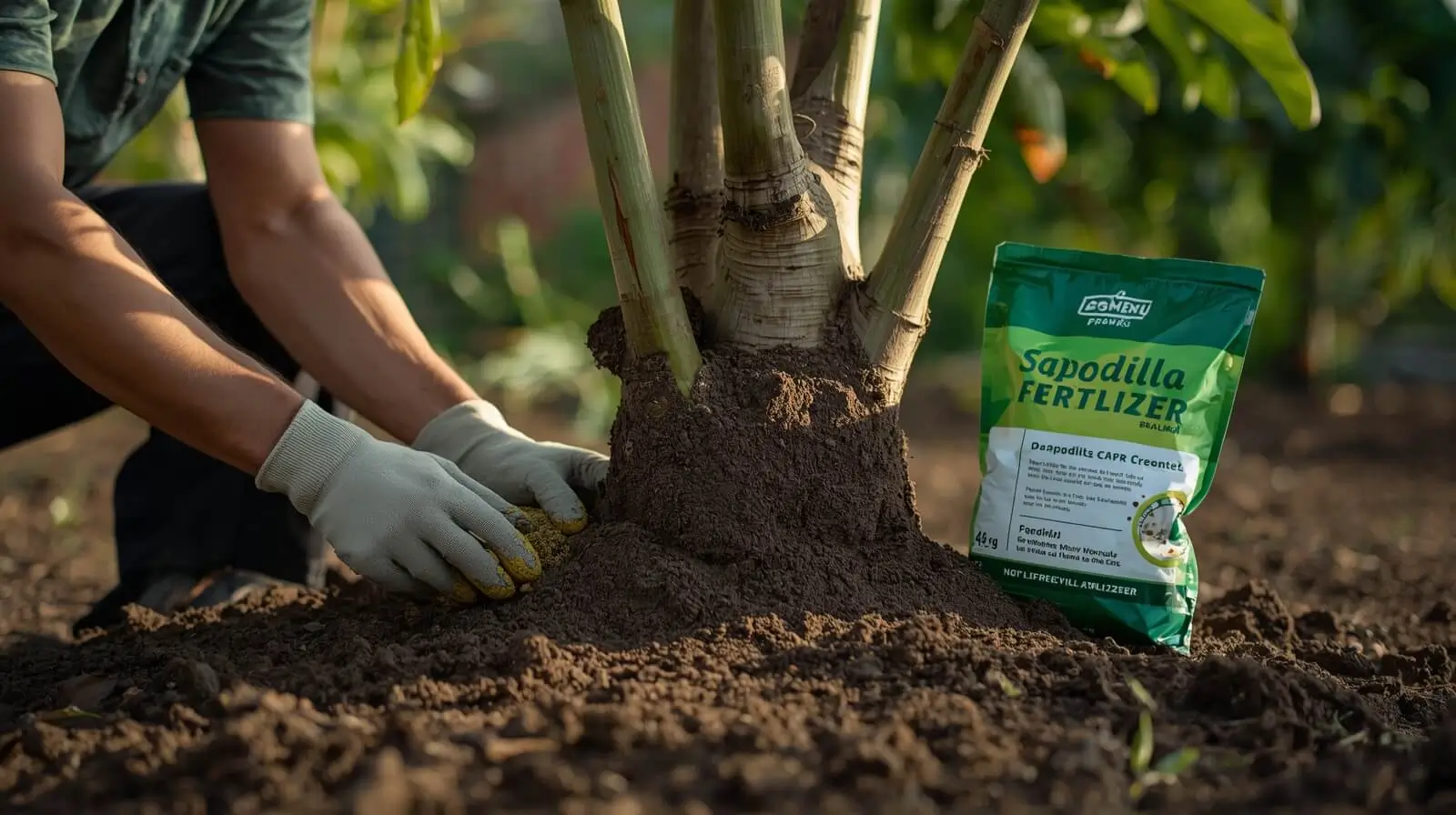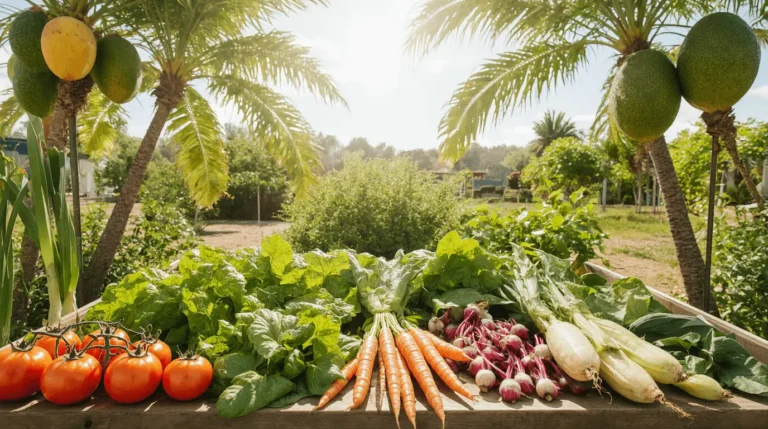When I first grew the Silas Woods sapodilla, I realized how this variety is characterized by a naturally dwarf form that feels incredibly manageable in a small garden or even a container, especially for gardeners seeking an appealing tropical plant that demonstrates impressive growth and fruiting potential. Its habit stays compact, yet the prolific production of sweet fruit with a flavor reminiscent of brown sugar feels truly remarkable, almost surprising the first time you taste it at home. I’ve seen how various warm climates suit this tree beautifully, as the adaptable nature of the plant easily enhances the overall experience of home gardening, especially because the maintenance stays low, the results stay fruitful, and the attributes make it an excellent option even for beginners. What stood out most to me was how rapid the early fruit set can be, which demonstrates how such a small tree can make a big impact when grown as part of a tropical-inspired space, especially when all the simple requirements come together naturally and create a satisfying rhythm to caring for it, making the silas woods sapodilla one of the most rewarding choices for home growers.
Define Silas Woods: A Unique Sapodilla Variety
When I first learned about the Silas Woods variety, I was surprised by how unique this sapodilla truly is, especially since it comes from Manilkara zapota and grows as a dwarf tree with a steady growth habit that feels both practical and enjoyable. This cultivar has an impressive fruiting potential, and its notable ability to produce fruit within 1-2 years of planting makes it an excellent option for home gardens where space matters. I’ve often seen it grown in containers, and its sweet taste, reminiscent of brown sugar, brings real joy to any garden when the ripe flesh is easily scooped with a spoon. Its shiny leaves, aromatic blossoms, and delicious fruits also add a gentle charm that enhances the visual appeal of outdoor spaces, especially when the average size of about 2 to 4 inches in diameter appears consistently across the tree.
I’ve noticed that it typically produces twice a year, with crops maturing in 6-8 months after flowering, and it truly thrives in USDA zones 10-11 when the soil is well-drained, the sun exposure is full, and the watering stays regular to ensure optimal results.
For an in-depth review of the Silas Woods sapodilla’s growth habits, fruiting potential, and garden suitability, you can read the article on the Everglades Farm blog here.
Explore the Origin and Development of Silas Woods
When I first learned about the cultivar known as Silas Woods, I was impressed by how it was named in honor of a dedicated member of the Rare Fruit Council International (RFCI), and how its origins trace back to the Homestead Florida area. This unique selection from a broader species that is native to Central America, especially Mexico and Belize, has been carefully cultivated for its compact size, prolific fruiting capabilities, and overall appeal as a popular choice for home gardeners. I’ve seen how local growing conditions, often characterized by warm climate, well-drained sandy loam soil, and reliable sunlight, have shaped the development of this tree, fitting perfectly with the preferences of gardeners seeking a manageable and fruitful tree in their spaces.
From my own experience visiting Florida orchards, I’ve noticed that expert assessments often highlight the adaptability of sapote farming, especially since Silas Woods thrives in the region’s subtropical environment. A two-year-old plant can yield approximately 20 ripe fruits, showing impressive productivity for such a clonal variety that requires vegetative propagation and has the ability for year-round production. These traits greatly enhancing the overall appeal for anyone interested in cultivating tropical produce in their backyards, especially when the goal is to enjoy reliable harvests from a dependable and rewarding tree.
Identify Key Characteristics of Silas Woods
When I first saw the sapodilla known as Silas Woods, I understood why it is considered notable among growers. Its dwarf form and steady growth habit allow it to typically stay compact while still reaching useful heights just under 20 feet when planted in the ground. This variety also features glossy elliptical leaves and produces fragrant white flowers that naturally attract pollinators, enhancing the overall appeal of home gardens. The fruit is spherical, ranging from 2 to 4 inches in diameter, with a smooth brown skin and a sweet, grainy texture reminiscent of a pear soaked in sugar, which makes it a joy to harvest and taste.
From my own growing experience, this type is self-pollinating and highly productive, sometimes requiring thinning to maintain optimal size and ensure good tree health. Its strong adaptability makes container gardening easy, so it’s widely favored in urban setups.
Understand Growing Requirements and Care for Silas Woods

When I first started caring for sapodilla trees like Silas Woods, I learned how well it flourishes when the soil is well-draining and the plant thrives in full sun. It helps to give it a minimum of 6 to 8 hours of direct sunlight each day because this variety demonstrates strong drought tolerance once established, yet it still benefits from consistent watering, especially during dry spells. I’ve seen how it can withstand a broad temperature range from 25°F to 100°F, making it highly adaptable to various climates. For optimal growth, using a balanced fertilizer specifically designed for tree crops—such as a 10-10-10 N-P-K ratio—is advisable, and it gives the plant a steady boost without overwhelming it.

In my own garden, regular pruning has never been essential because the tree stays naturally compact, but some thinning of fruit is sometimes necessary to prevent branch breakage and promote larger fruit size. Occasional repotting of potted trees every 2-3 years is recommended to avoid root crowding, and close monitoring for signs of nutrient deficiencies is truly crucial for maintaining plant health. For instance, yellowing leaves can indicate nitrogen deficiency, and in colder seasons, even a light frost exposure below 30°F may cause damage, so taking the right protective measures when conditions worsen or when climates shift is always worth the effort.
Read Also:
- Gardening & Plant Care Guide for Thriving Plants
- Tropical Fruit Trees: Grow Exotic Paradise at Home (Guide)
Conclusion

Caring for the Silas Woods sapodilla becomes much easier once you understand its natural preferences and growth behavior. With the right soil, steady sunlight, and proper watering, this compact tropical tree can thrive in a variety of climates while rewarding you with sweet, flavorful fruit. By paying attention to small details like fertilizer balance, light pruning, and seasonal protective measures, you help the tree stay healthy and productive for years. With its strong adaptability and dependable yields, Silas Woods is an excellent choice for both new and experienced gardeners who want a reliable, quick-growing tropical addition to their garden or container space.
FAQs
1. How much sunlight does Silas Woods sapodilla need?
It needs 6–8 hours of direct sunlight every day for the best growth and fruit production.
2. Is Silas Woods good for container gardening?
Yes. Its compact habit and adaptable nature make it a great choice for container growing, especially in small spaces or urban settings.
3. How often should I water the tree?
Water consistently, especially during dry spells. Once established, the tree develops good drought tolerance, but young plants still need regular moisture.
4. What fertilizer is best for Silas Woods?
Use a balanced 10-10-10 N-P-K fertilizer that is specifically designed for fruit trees. Apply according to label instructions for optimal growth.
5. Can Silas Woods survive cold weather?
It can handle a temperature range down to 25°F, but frost exposure below 30°F may damage the tree. Apply protective measures during cold nights.
6. How do I know if my sapodilla has a nutrient deficiency?
Watch for yellowing leaves, which often indicate nitrogen deficiency. Adjust fertilizer or soil nutrients as needed.
7. Do I need to prune this variety?
Regular pruning is not essential because Silas Woods stays naturally compact. However, light shaping or removing weak branches can help maintain health.
8. When should I repot a container plant?
Repot every 2–3 years to prevent root crowding and give the tree enough space to grow.
9. What makes Silas Woods different from other sapodilla varieties?
Its quick-yield, manageable size, and strong adaptability make it one of the most beginner-friendly sapodilla types available.
10. How can I promote larger fruit size?
Perform thinning on heavy fruit clusters to reduce weight on branches and allow remaining fruits to grow larger.




